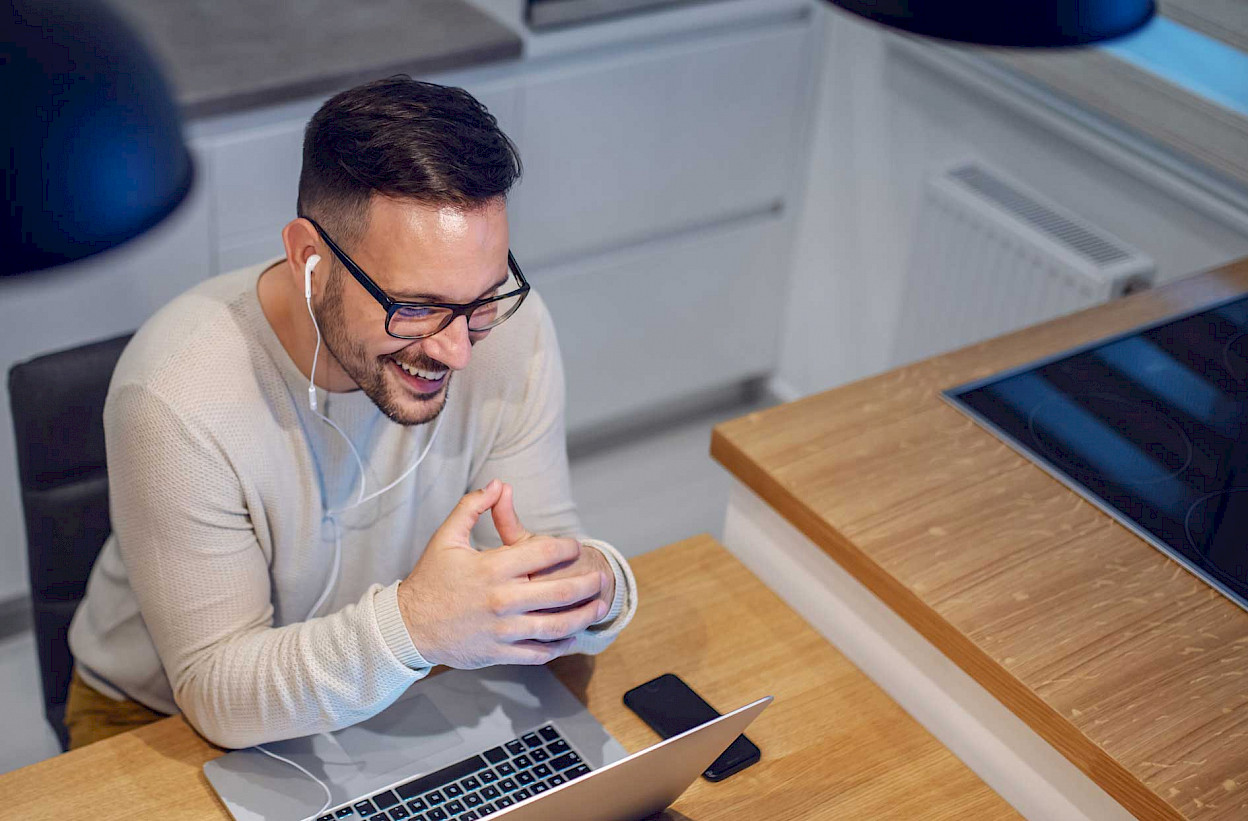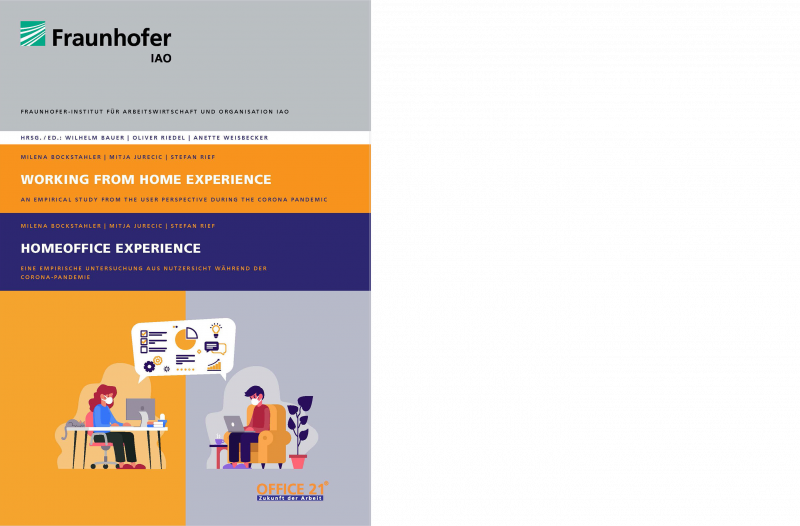As part of the OFFICE 21 research project, the Fraunhofer Institute for Industrial Engineering (IAO) investigated how working from home affects the productivity of employees. For this investigation, about 2,100 study participants provided information from May until July 2020 about their work at the home workplace. For purposes of comparison, the researchers used data from the “Office Analytics” study conducted in 2018, which had focused on work at an employer’s office.
The most important findings
Whether the respondents are working from home full-time or only single days has no effect on their performance. The environment in which they work is relevant to their performance, however. The work performance of employees who have a separate room to use as a study is significantly higher than that of employees who work in the kitchen, living or dining room, bedroom or various other places in their apartment. Creativity is also influenced by an employee’s physical surroundings. With respect to creativity, not only the use of a separate workroom but also switching between a variety of (working) areas leads to positive results. The authors of the study attribute this initially surprising finding to the fact that switching between various places of work generally has a stimulating effect.
Another significant factor affecting performance when working from home is the question of whether the users are able to concentrate fully on their work. Creative performance does not seem to be impacted by distractions due to the need to care for children or older dependents. By contrast, the performance of people working from home who can focus fully on their work is significantly higher than that of individuals who need to care for family members during their working time. However, distractions were compensated for in many cases during the period under investigation. One frequently used strategy was to shift office work to the late evening hours. A total of 37% of all the respondents said they often worked outside the usual working hours when at home.


Performance dimensions in detail
ivity and creativity were measured. In addition, the authors of the study from the Fraunhofer IAO analysed how these parameters developed over time.
The flow of information within the company
The overall flow of information was assessed as good (with a mean value of 3.8 on a five-point scale). In particular, shared work on documents when working from home generally functions flawlessly. However, networking with colleagues, as well as spontaneous sharing of information, tended to be problematic. In addition, many people working from home felt they were excluded from information about important issues affecting their company. It must be said, however, that this complaint was also made about work done at the employer’s office.
Adequate technical equipment is an important requirement for a well-functioning flow of information. Clear rules for working from home, as well as having previous experience of working from home, have a demonstrably positive effect on the quality of information sharing. That also applies to leadership based on trust and to managers’ support for employees.
Performance when working from home
The respondents’ assessment of their work performance when working from home has a mean value of 4.0. 44% of the respondents say they are just as productive when working from home as when working at the employer’s office, and 39% of them feel they are more productive when working at home. Only 18% of the respondents feel that the work they do at home is less productive than their work at the employer’s office.
Notably, the respondents’ assessment of the productivity of their work at home is higher on average than the Office Analytics participants’ assessment of the productivity of their work in the employer’s office. One possible reason for this is the fact that the respondents say their workstation at home is significantly better suited for concentrated work than their workstation in the employer’s office (60%). The employees also prefer working from home for telephone calls and web conferences.
Creativity when working from home
Working from home received its worst evaluations when employees were asked how suitable it was for the “development of creative ideas” and the “generation of new ideas and solutions”. On average, the assessment of the creativity factor had a mean value of 3.4. However, this comparatively poor rating seems to depend only partly on the place of work. In the Office Analytics study as well, the respondents tended to assess their own creativity as below average.
Success factors over time
The flow of information between the employees increased steadily until the twelfth week of working from home and subsequently decreased slightly. Work performance was at its high point in the sixteenth week of working from home before also decreasing slightly. Creativity increased only slightly. After the sixteenth week it then decreased to its initial level, which was low to begin with.
The authors of the study draw two conclusions regarding the development of these three factors over time. Firstly, many companies needed time to create the necessary technical and organizational prerequisites for working from home. And secondly, after the initial euphoria of many people working from home, signs of fatigue appeared and slightly dampened the strong commitment they had expressed previously.
A look at the future
Lastly, the survey participants were asked what expectations they had about the future. In this regard, the respondents expect that the proportion of work done in the employer’s office will decrease and that they will also spend more time working from home in the future. Before the Covid-19 pandemic, the study’s respondents spent an average of 14.6 out of 20 workdays at the employer’s office and 2.8 days at home. They assume that in the future this ratio will change to 10.8 days in the employer’s office and 7.2 days at home. In general, the employees expect to be able to structure their work more flexibly in the future. 61% of the survey’s respondents expect to have more flexibility in terms of time and location. 23% of them expect that things will stay the same, and 17% expect to see an uneven development of these factors.
Information about the study
Bockstahler, Milena; Jurecic, Mitja; Rief, Stefan, Homeoffice Experience – Eine empirische Untersuchung aus Nutzersicht während der Corona-Pandemie (The working from home experience—an empirical study from the user’s perspective during the Covid-19 pandemic). Stuttgart: Fraunhofer IAO 2020, ISBN 978–3‑446–46224‑3.
You can find further information and downloads here >

Photography in this article: aluxum / iStock, dusanpetkovic / iStock, damircudic / iStock




